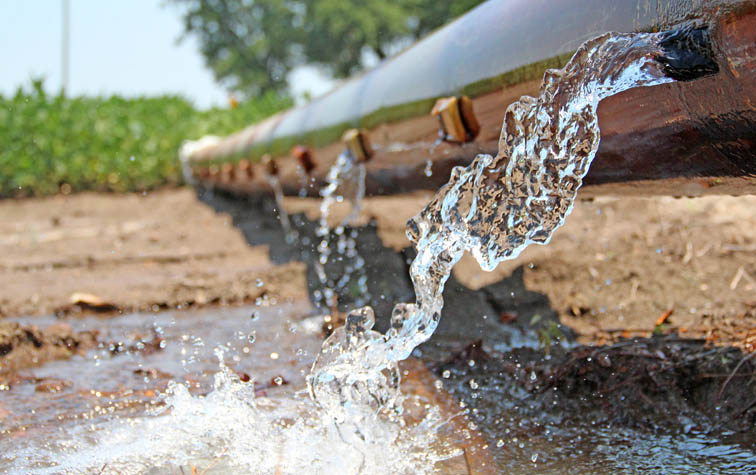
Aiming to keep Mississippi Delta growers informed about the latest findings by the Delta Sustainable Water Resources Task, a meeting was held in Clarksdale, Miss., on Sept. 26. The task force, according to Mississippi Farm Bureau, “was formed to develop and implement actions to sustain water resources for agriculture, fisheries, and wildlife in the Delta.”
At the meeting, Jeannie Barlow, USGS hydrologist, spoke on “some different scenarios we’ve been analyzing. We’re working to make groundwater flow models as good as they can be, working together to pull together all the data we have, and working together to actually collect field data.
“This is my favorite disclaimer: all models are wrong but some are useful. Keep that in mind — a model is only as good as the information feeding it. And we know all models won’t predict the future perfectly. So, we want to use them appropriately.”
To work on this, researchers don’t want to study in isolation.
“We want to encourage collaboration,” said Barlow. “In fiscal year 2014, MDEQ (Mississippi Department of Environmental Quality) and USGS entered into a memorandum of understanding. Our goal is pretty simple: we want to take the information, the models already available to us, assess those and determine as a group how all of our stakeholders and partners could move forward to better understand this resource.”
Analysis showed there are three areas that need better understanding.
“The biggest one is ‘water use.’ Water use is the biggest stress on the system — it’s an order of magnitude larger than input or output into the alluvial aquifer. It’s also the most unknown or uncertain value we have.”
Recharge
Second is “recharge.”
“How much water is coming back into the aquifer on an annual basis? We didn’t have great understanding of that because our monitoring networks weren’t always collecting data in ways we needed.”
Third is “observation.”
“We have a lot of data. If you look at us on a national scale, the Delta stands out for the amount of data it has. It’s a great thing. The issue is that often the data isn’t in one place. We’re working really hard to get all that data into one place so we can use it all together.
“We’re looking at scenarios that will either decrease groundwater withdrawals — irrigation efficiency, instream weirs that would increase the amount of surface water available for irrigation, tail-water recovery and on-site farm storage, interbasin transfers (like the Quiver/Tallahatchie), or an increase in recharge to the alluvial aquifer (as with the groundwater transfer injection project, which has a pilot study that began in 2017).”
For each scenario, there are several sub-scenarios to look at “basic levels of engagement. So, with irrigation efficiency, we’re looking at that occurring across the whole Delta or in the central Delta. For instream weirs, we have different adoption rates — we assume 33 percent of people within a defined surface area will actually switch from groundwater to surface-water all the way up to 100 percent. That way we can see the range of effect for each scenario.”
Most realistic scenarios
Barlow tackled what the researchers consider the most realistic scenarios.
“On-farm storage isn’t included. … That isn’t because it isn’t feasible but more because of the funding opportunities available.
“For the irrigation efficiency scenario, we worked with (MSU irrigation specialist) Jason Krutz. We assumed that anywhere there’s rice or soybean, there’s a 28 percent reduction in water use. … For corn, we assume a 40 percent reduction. For cotton, it’s a zero percent reduction.”
There are two geographies studied: all Delta acreage and another for just the central Delta. “The central Delta is a 283-square-mile area representing an area where water levels are typically lowest. … The base scenario in the central Delta shows if you run the model for 50 years, we get a 36-foot drop in water levels on average.”
The weir scenario.
“This is where we’re putting weirs in to increase the amount of surface water available for irrigation. The assumption is growers will be going from groundwater to surface water for withdrawals. … Today, we’ll be looking at half-mile distribution area with 33 and 66 percent adoption rates…
“As we have higher adoption rates, the water level rises but is still in decline.”
The Quiver/Tallahatchie transfer project.
“This is a half-mile distribution at 33 and 66 percent adoption rates.”
Overall, using a 50-year model and either adoption rate, the water levels show decline.
The groundwater transfer injection scenario.
“The assumption is the majority of the water would come from the Tallahatchie not the aquifer. That water would be transferred to the central Delta area and injected. We had to do some analysis to ensure we weren’t injecting too much water — we don’t want water coming out on the land surface.
“We’re looking at four scenarios based on injection amounts: 24,000 through 90,000 acre feet of water injected into the alluvial aquifer. What would be the impact in the area of interest?
“This is the scenario where we see the most response. As we add more and more water — inject it into the system — we see the level go up and up. At 96,000 acre feet of water, we actually get into recovery for the (central Delta).”
Note: the task force includes the Yazoo Mississippi Delta Joint Water Management District, Delta Council, Delta F.A.R.M., Mississippi Farm Bureau, the U.S. Army Corps of Engineers, the USDA Natural Resources Conservation Service, the Mississippi Soil and Water Conservation Commission, and the Mississippi Department of Environmental Quality.
About the Author(s)
You May Also Like




